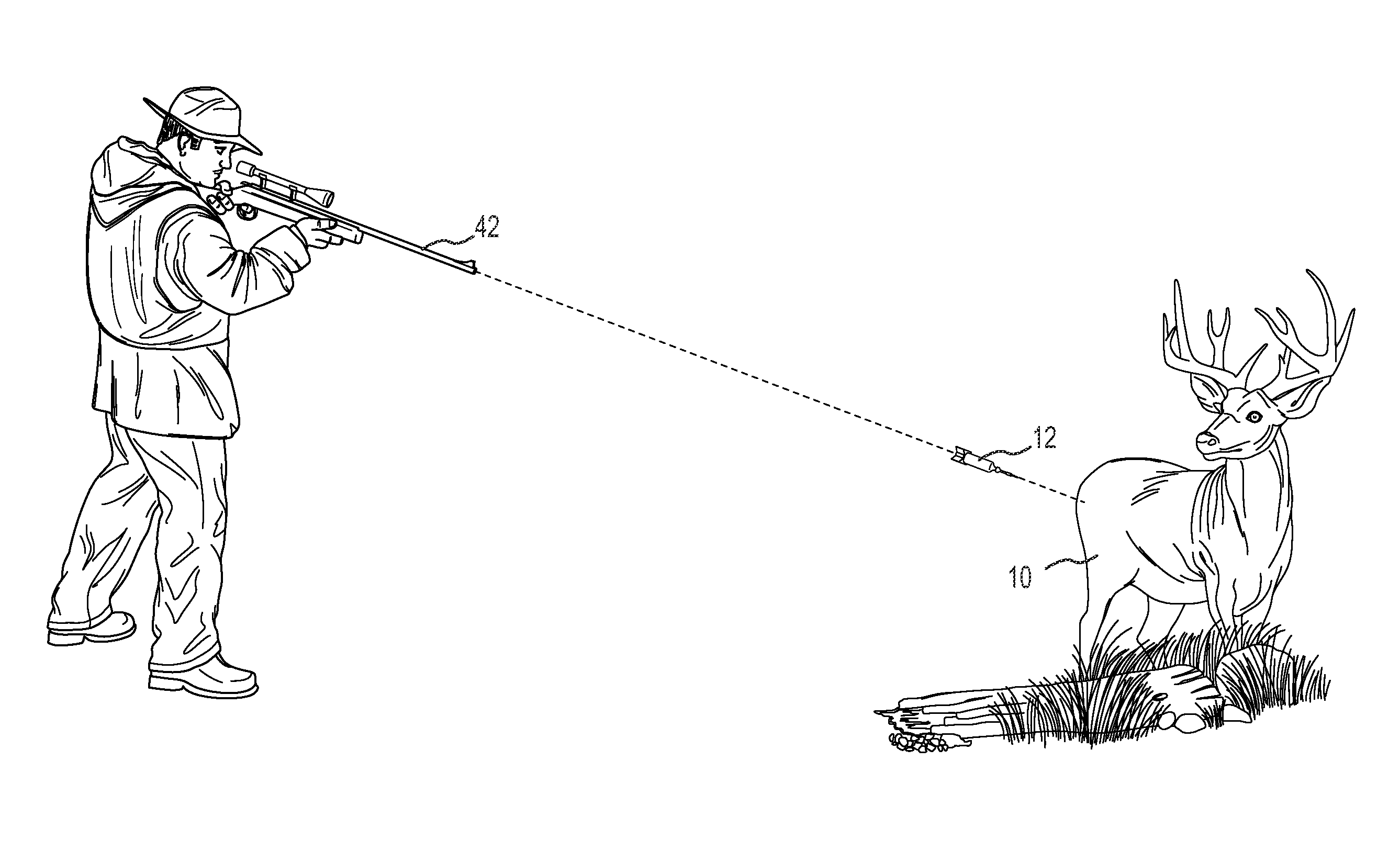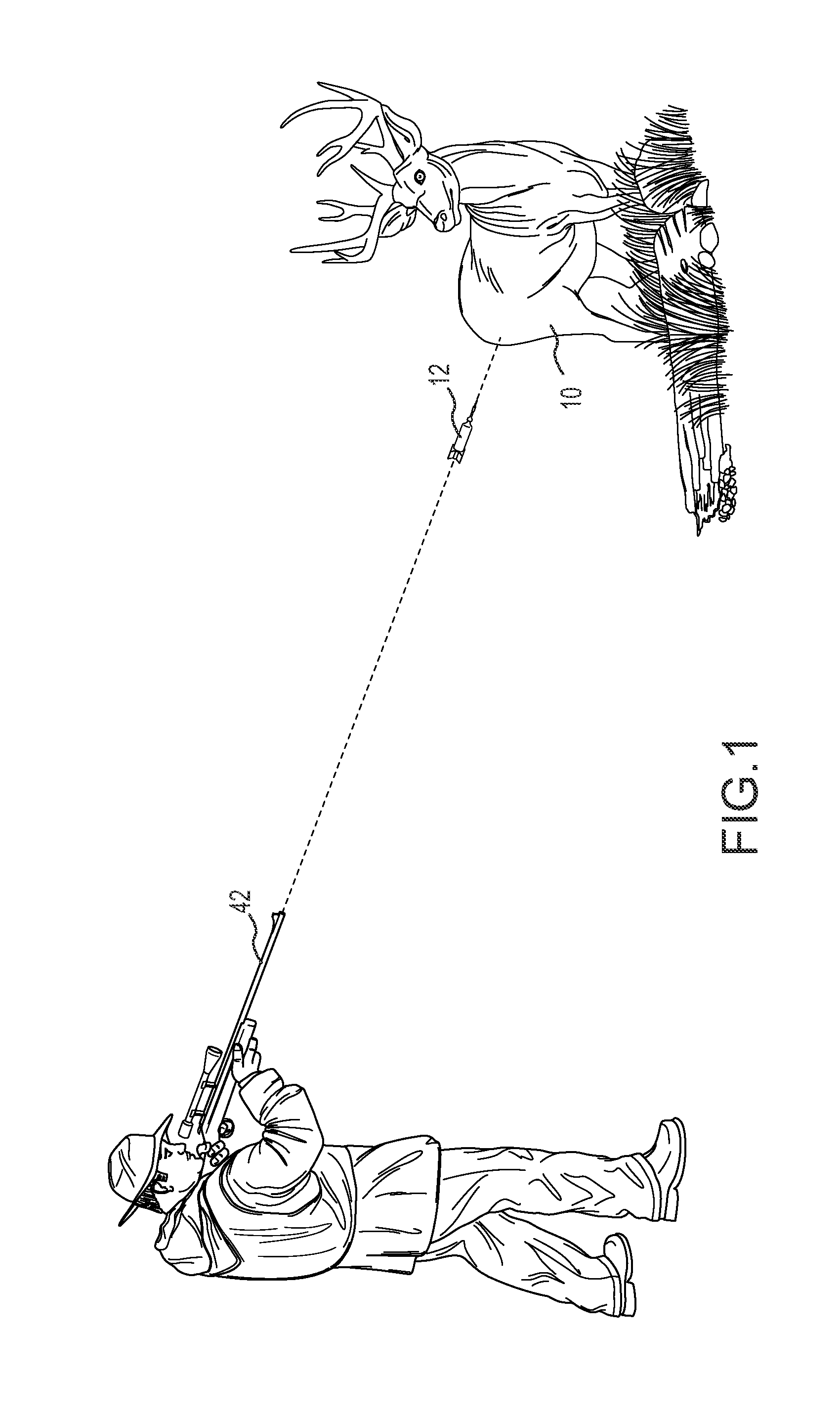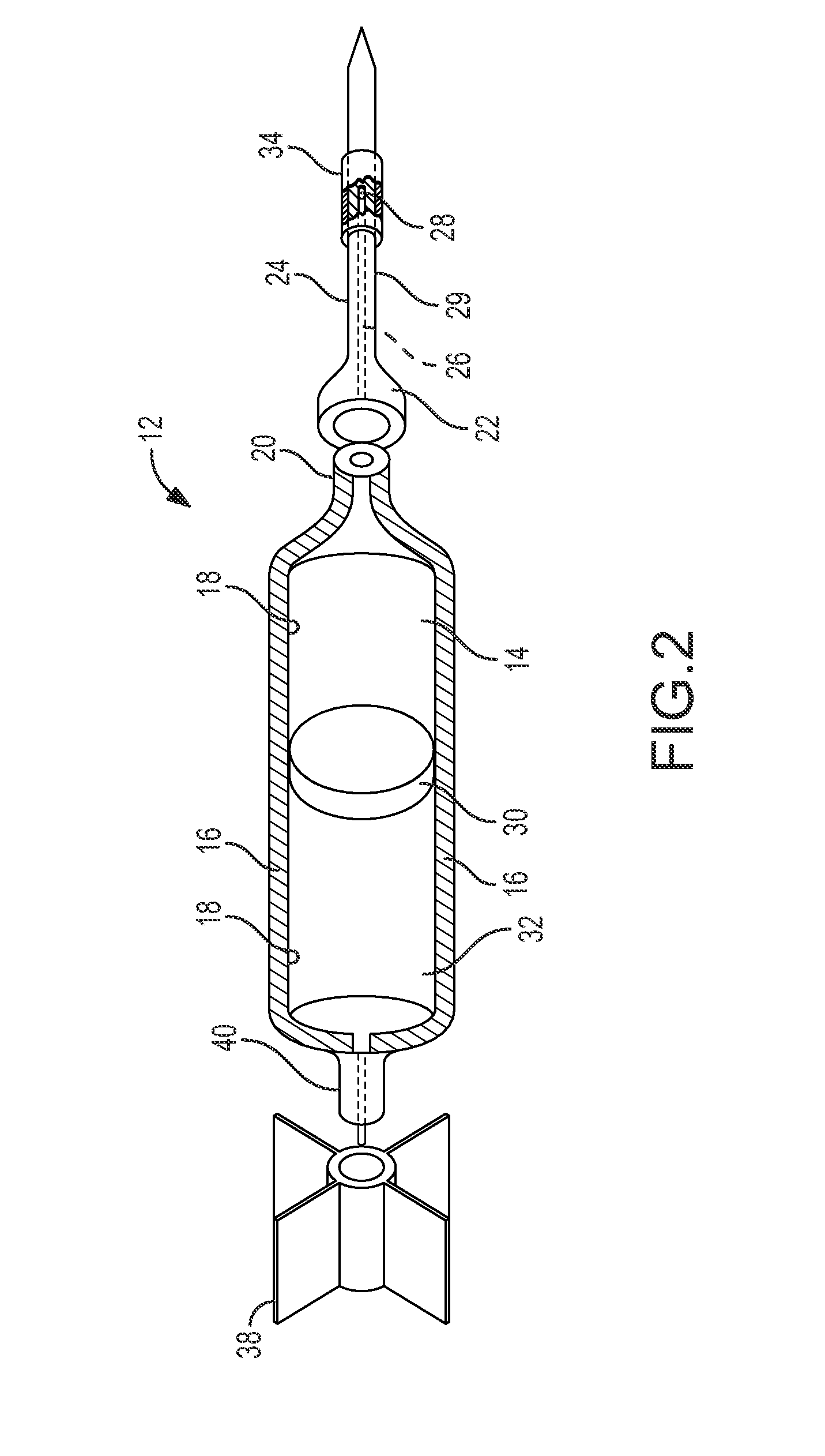Pharmaceutical Combination for and Method of Anesthetizing and Immobilizing Non-Domesticated Mammals
- Summary
- Abstract
- Description
- Claims
- Application Information
AI Technical Summary
Benefits of technology
Problems solved by technology
Method used
Image
Examples
example 1
[0043]Seven female and seven male free-ranging white-tailed deer (Odocoileus virginianus) were anesthetized and immobilized in an approved-protocol study, by the injection of BAM administered from a single dart shot from hunting blinds stationed at deer feeding stations. Environmental temperature ranged from 11-28° C. (mean 22.2±4.1° C.). All deer were categorized as adults in good body condition.
[0044]The BAM was formulated from butorphanol tartrate at 24-40 mg / dart (30 or 50 mg / ml), azaperone tartrate at 15-20 mg / dart (50 mg / ml), and medetomidine hydrochloride at 8-10 mg / dart (20 or 40 mg / ml). Doses were based on visually estimated weights of 45.5 kg for an adult doe and 55 kg for an adult buck. Tracking was initiated a short time (approximately 5-10 min) after darting to allow drugs to reach full anesthetic effect.
[0045]Dart administration time, time to locate animal (time animal found minus time animal darted), time to recumbency (time animal recumbent minus time animal darted),...
example 2
[0057]Eight orphaned, yearling captive black bears and five free-ranging black bears (Ursus americanus) were effectively anesthetized and immobilized with BAM. The BAM was premixed with 0.5 ml of butorphanol tartrate (30 mg / ml), 0.25 ml of azaperone tartrate (50 mg / ml) and 0.25 ml of medetomidine hydrochloride (20 mg / ml) to yield a final mix of 15 mg / ml butorphanol tartrate, 12.5 mg / ml azaperone tartrate and 5 mg / ml medetomidine hydrochloride. The BAM was administered to the eight yearling captive black bears by hand injection. The BAM was administered to three of the five free-ranging black bears via hand injection after these bears were trapped, and by dart to the remaining two free ranging bears who were treed.
[0058]The total volume of drug administered was based on 0.4 ml BAM per estimated 50 pounds body weight prior to injection. Blood oxygenation and heart rate were measured in approximately 10 minute intervals with a pulse oximeter. Anesthetic induction was measured as the ti...
example 3
[0063]Seven plains bison (Bison bison) were anesthetized and immobilized by BAM, made with concentrated butorphanol tartrate (50 mg / ml), azaperone tartrate (100 mg / ml) and medetomidine hydrochloride (40 mg / ml). The animals were approached on foot and injected with BAM from a 3 cc dart. Four bison were captive animals from a research facility and three were free-ranging wild bison. The mean dosages administered were 0.29 mg / kg for butorphanol tartrate, 0.14 mg / kg for azaperone tartrate and 0.07 mg / kg for medetomidine hydrochloride. Animals were blindfolded and maintained in sternal recumbency. The mean time to sternal recumbency was 14.4 minutes (range 10 to 18 minutes). The bison were non-responsive to stimuli, and quality of anesthesia was very good, similar to neuroleptoanalgesia. All vital signs remained within acceptable limits. Oxygen saturation varied from 75% to 96%, arterial oxygen averaged 63.8 mm Hg (range 59.7-69.3), and arterial CO2 averaged 52.2 mm Hg (range 49.6-53.5)....
PUM
| Property | Measurement | Unit |
|---|---|---|
| Length | aaaaa | aaaaa |
| Density | aaaaa | aaaaa |
| Density | aaaaa | aaaaa |
Abstract
Description
Claims
Application Information
 Login to View More
Login to View More - R&D
- Intellectual Property
- Life Sciences
- Materials
- Tech Scout
- Unparalleled Data Quality
- Higher Quality Content
- 60% Fewer Hallucinations
Browse by: Latest US Patents, China's latest patents, Technical Efficacy Thesaurus, Application Domain, Technology Topic, Popular Technical Reports.
© 2025 PatSnap. All rights reserved.Legal|Privacy policy|Modern Slavery Act Transparency Statement|Sitemap|About US| Contact US: help@patsnap.com



